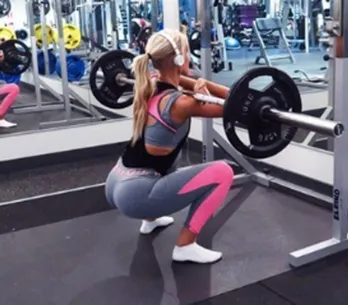Want to exercise, but always manage to find a good excuse not to? Running is ideal: you can do it any time, anywhere, at your own pace, for as long as you want to, alone or with others, with the minimum of equipment. Here's our guide to getting into it and getting the most out of it.
The benefits of running
-Ftness. Running is the number one endurance sport. It uses the cardiovascular and respiratory systems non-stop, oxygenates the body, improves circulation, increases heart and lung capacity. Long term, it slows down the ageing process of the muscles, increases bone density, aids the immune system and prevents artery problems.
-Weight loss. Running burns more calories than almost any other sport (around 500 kcal per hour for an average speed of 10 km per hour. And running at 10 km/h, a speed at which you can still breathe, you burn 30% fat in 30 minutes.
-Toning. Along with swimming, jogging is one of the most all-round sports you can do. It uses all the muscles: the neck, back, arms, abs, buttocks, thighs and calves. Keeping your back straight while your pelvis moves with every step is excellent training for postural co-ordination.
-Happiness. Exerting yourself so much banishes stress and anxiety and makes the body secrete adrenaline and endorphins which make you feel good, give you energy, a feeling of well-being and even euphoria.
The downsides
-Starting out is tough. It's not easy at first to find a good pace without getting a stitch or out of puff. Plus, the first few times you often ache so badly it hurts to go down the stairs...
-Running is tough on your joints. With each stride, the impact affects your tendons, muscles, joints and back. Pay attention to little niggles, especially if you're overweight.
-It can be addictive. When you run at a certain level and with a certain frequency, you get used to the weight loss and feeling you get from the happy hormones secreted when you run, and you can easily get addicted without realising it.
The basics of good running
-Invest in some good shoes. It's the most important piece of equipment you need to own! Choose according to 4 criteria: the shape of your foot (overpronator, underpronator (supinator) or neutral), the cushioning at the heel and toe, safety (non-slip soles and robust materials) and comfort. It's better to get specialist advice and try several pairs out.
-Make gradual progress. It's better not to run before you can walk - literally! For example, start by power-walking, or only run for 15 minutes and increase the length and intensity of your runs gradually.
-Warm up. Cold, unstretched muscles are less elastic and prone to tearing and injury. Before you start running, walk fast for a few minutes and jog through a few exercises (heels to bum, knees to chest, skipping, arm rotations etc).
-Don't skip your warm-down. It prevents aches and pains the next day! Reduce your intensity gradually by walking for a few minutes, stretching the muscles you've used gently, and drinking water.
More information
A useful site dedicated to female runners that may be of use, especially for women's kit: www.running4women.com. Another good site all runners should check out is www.realbuzz.com. The running section is very comprehensive and includes useful sections on cross training.













